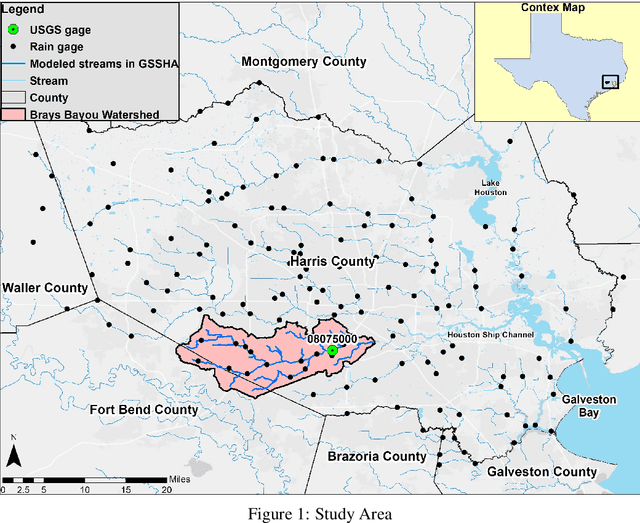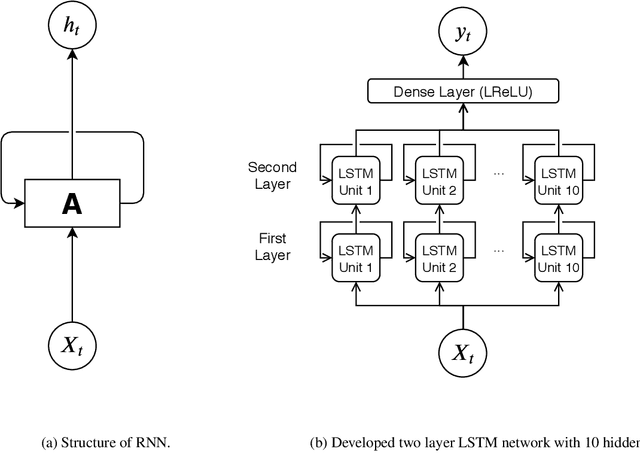High Temporal Resolution Rainfall Runoff Modelling Using Long-Short-Term-Memory (LSTM) Networks
Paper and Code
Feb 07, 2020



Accurate and efficient models for rainfall runoff (RR) simulations are crucial for flood risk management. Most rainfall models in use today are process-driven; i.e. they solve either simplified empirical formulas or some variation of the St. Venant (shallow water) equations. With the development of machine-learning techniques, we may now be able to emulate rainfall models using, for example, neural networks. In this study, a data-driven RR model using a sequence-to-sequence Long-short-Term-Memory (LSTM) network was constructed. The model was tested for a watershed in Houston, TX, known for severe flood events. The LSTM network's capability in learning long-term dependencies between the input and output of the network allowed modeling RR with high resolution in time (15 minutes). Using 10-years precipitation from 153 rainfall gages and river channel discharge data (more than 5.3 million data points), and by designing several numerical tests the developed model performance in predicting river discharge was tested. The model results were also compared with the output of a process-driven model Gridded Surface Subsurface Hydrologic Analysis (GSSHA). Moreover, physical consistency of the LSTM model was explored. The model results showed that the LSTM model was able to efficiently predict discharge and achieve good model performance. When compared to GSSHA, the data-driven model was more efficient and robust in terms of prediction and calibration. Interestingly, the performance of the LSTM model improved (test Nash-Sutcliffe model efficiency from 0.666 to 0.942) when a selected subset of rainfall gages based on the model performance, were used as input instead of all rainfall gages.
 Add to Chrome
Add to Chrome Add to Firefox
Add to Firefox Add to Edge
Add to Edge